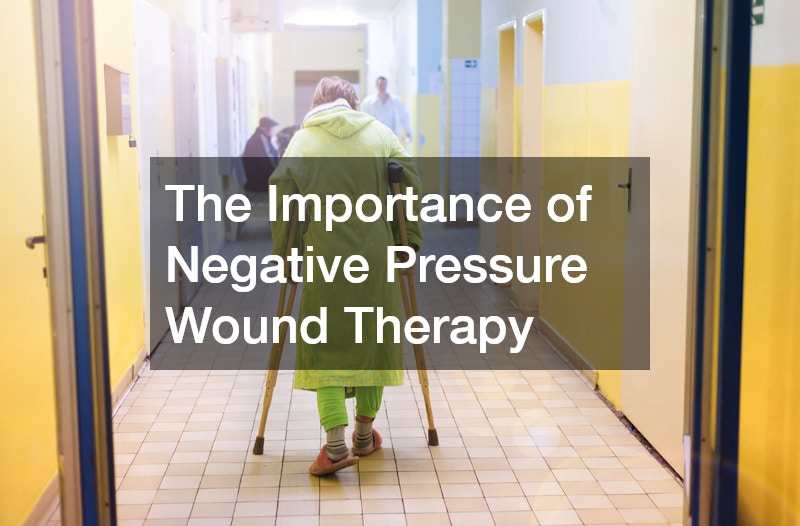Negative Pressure Wound Therapy (NPWT) has revolutionized modern wound care by providing a more effective solution for various wound types. Its significance lies in the unique mechanism of applying negative pressure, which facilitates faster healing and improves patient outcomes across several medical conditions.
Over the years, NPWT has become an integral part of medical treatment for both acute and chronic wounds. It offers numerous benefits, such as accelerating healing times, reducing infection risks, and enhancing the overall quality of life for patients.
The applications of NPWT are diverse, addressing a wide range of wounds, from surgical incisions to pressure ulcers. As technology advances, its role in wound management continues to expand, offering hope for better therapeutic outcomes.
What is Negative Pressure Wound Therapy?
Understanding the Basics of NPWT
NPWT involves the use of a vacuum dressing to promote healing in acute and chronic wounds. By applying controlled negative pressure, it assists in drawing out fluid and infectious materials from the wound, which distinguishes it from traditional methods.
This therapy creates a controlled, moist environment conducive to wound healing, enabling faster recovery compared to conventional treatment methods. It optimizes blood flow and reduces edema, leading to improved tissue regeneration.
NPWT systems typically involve a foam dressing placed on the wound, connected to a vacuum pump. This setup creates a sealed wound environment, enhancing the efficiency of the healing process.
History and Development of NPWT
Initially introduced in the 1990s, NPWT has undergone significant technological advancements, evolving from simple suction devices to sophisticated systems. Early developments were rooted in the understanding that negative pressure could aid in wound management.
As research progressed, NPWT became more refined, with improvements in device design and effectiveness. The adaptation of new materials for dressings and the integration of software technology have enhanced its capabilities.
These advancements reflect a growing recognition of NPWT’s therapeutic benefits and have driven its widespread adoption in various healthcare settings. The evolution of NPWT underscores its critical role in modern wound care.
How Does Negative Pressure Wound Therapy Work?
Mechanism of Action
NPWT operates by applying negative pressure to the wound, which helps in increasing blood circulation to the affected area. This mechanism reduces swelling and prevents fluid accumulation, thereby expediting the healing process.
Furthermore, the therapy assists in removing bacteria and exudates, reducing infection risks while stimulating the formation of granulation tissue. The mechanical forces applied can also contribute to cell proliferation and improved tissue integrity.
Scientific studies support the efficacy of NPWT in enhancing wound closure, highlighting its role in promoting faster wound contraction and epithelialization. These attributes contribute to the therapy’s success in managing complex wounds.
Application and Procedure
The application of NPWT involves placing a specialized foam dressing over the wound, which is then sealed with an adhesive drape. A tube connects the dressing to a vacuum pump, creating a controlled negative pressure environment.
This process requires meticulous preparation, as proper sealing is crucial for the therapy’s effectiveness. Healthcare professionals need to carefully monitor the wound condition and adjust the pressure settings based on patient-specific requirements.
Regular dressing changes are essential to maintain optimal healing conditions and prevent complications. This procedural aspect ensures the therapy’s sustained efficiency in promoting recovery.
What Types of Wounds Benefit from NPWT?
Acute and Chronic Wounds
NPWT is frequently applied to acute wounds, including surgical incisions and traumatic injuries. These types of wounds benefit significantly from the therapy’s ability to reduce edema and improve tissue perfusion.
In chronic wounds, such as those caused by prolonged pressure or circulatory disorders, NPWT supports effective healing where traditional methods may fall short. It assists in managing wound exudate and preventing tissue maceration.
Advanced Wound Types
For advanced wound care, NPWT offers an effective solution for complex cases, such as diabetic foot ulcers and pressure ulcers. These conditions pose a significant challenge due to their chronic nature and associated complications.
The therapy’s ability to enhance circulation and promote granulation makes it particularly suitable for these advanced wound types. It helps break the cycle of chronicity by addressing underlying physiological barriers to healing.
What are the Advantages of Using NPWT?
Clinical Benefits
The clinical advantages of NPWT are manifold, leading to significantly reduced healing times and lower infection rates. The therapy decreases wound exudate, which contributes to minimizing the need for additional surgical interventions.
Additionally, NPWT supports the removal of interstitial fluid, reducing pressure on surrounding tissues and promoting the growth of viable tissue. This results in enhanced wound closure, benefiting both immediate and long-term recovery.
Patient-Centric Benefits
Beyond clinical outcomes, NPWT significantly enhances a patient’s quality of life by reducing hospital stays and facilitating better mobility. The therapy’s efficient wound management allows for greater patient comfort and reduced discomfort.
By speeding up the healing process, NPWT helps patients resume normal activities more quickly, which is crucial for their mental and physical well-being. The therapy’s impact on the patient’s lifestyle cannot be overstated.
What are the Limitations and Challenges of NPWT?
Potential Complications
Despite its many benefits, NPWT is not without potential complications, such as wound infection risks and device-related issues, including foam adherence to the wound bed. These complications necessitate careful monitoring and management.
Occasional cases of tissue damage caused by excessive negative pressure have raised concerns among healthcare providers. Regular assessments and adjustment of pressure levels are vital for preventing such adverse effects.
Accessibility and Cost Considerations
NPWT’s accessibility is influenced by economic and logistical factors, with costs varying substantially depending on the wound type and treatment duration. Insurance coverage can be inconsistent, affecting patients’ access to this effective therapy.
The expense associated with the device and consumables used in NPWT can be a barrier for patients and healthcare facilities. Cost-effectiveness studies are crucial for understanding its value proposition compared to traditional methods.
.



